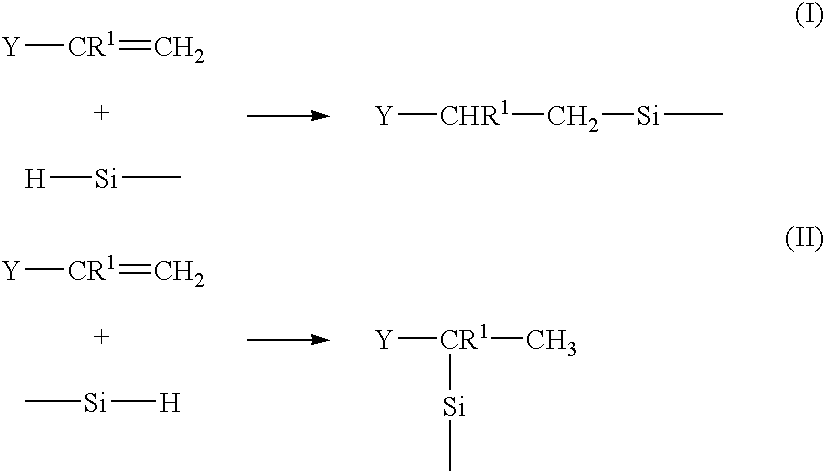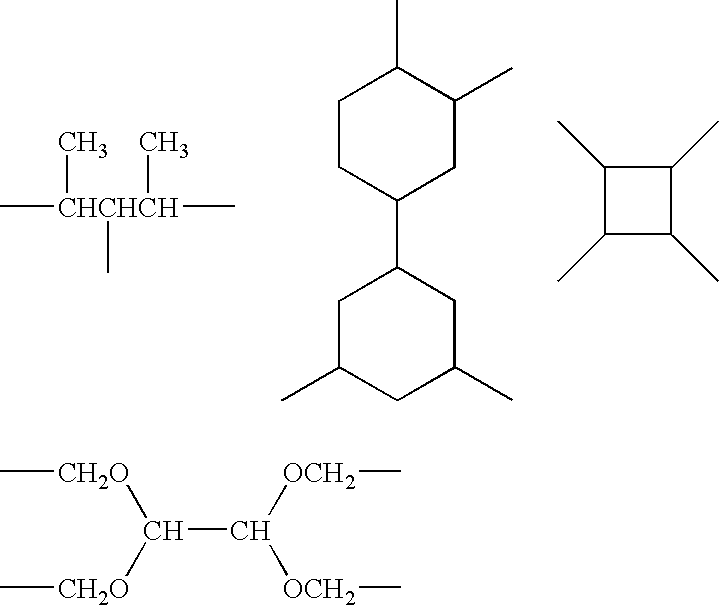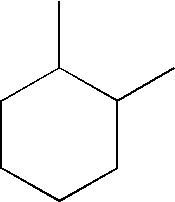Antifoam formulations
- Summary
- Abstract
- Description
- Claims
- Application Information
AI Technical Summary
Benefits of technology
Problems solved by technology
Method used
Image
Examples
working examples
[0109]All parts and percentages stated below are (unless stated otherwise) based on weight. The viscosities are based on 25° C.
(A) Preparation of the siloxane antifoams
[0110]A1: 94 parts of polydimethylsiloxane having a viscosity of 12,500 mm2 / s and 6 parts of a hydrophilic silica were homogenized three times using a colloid mill (0.6 mm gap). The silica was rendered hydrophobic in situ by heating the mixture to 190° C. for 10 hours.[0111]A2: 400 parts of a hydroxyl-terminated polydimethylsiloxane having a viscosity of 65 mm2 / s, 40 parts of trimethylsilyloxy-terminated polydimethylsiloxane having a viscosity of 40 mm2 / s, 4 parts of methyltrimethoxysilane and 1 part of a 0.5% strength phosphonitrile chloride catalyst were heated to 100° C. In the course of 20 minutes, the pressure was reduced to 35 mbar. Neutralization of the catalyst was then effected with 0.03 part of triisooctylamine. The polyorganosiloxane obtained had a viscosity of 19,000 mm2 / s. 5 parts of a pretreated hydropho...
examples 1 to 3 (
C11, C12, C13) and Comparative Experiments 1 and 2 (CV11 and CV12)
[0120]The preparation of the inventive antifoam formulations C11, C12, C13 and of the comparative antifoam formulations CV11 and CV12 were effected by simple mixing of 90 parts of the silicone antifoam stated in the table and 10 parts of the polyether / polysiloxane copolymer stated in the table using a laboratory dissolver. For the test, a mixture of 20 parts of this antifoam formulation and 80 parts of a mixture of aliphatic hydrocarbons having a viscosity of 3 mm2 / s and a flashpoint >100° C. was prepared using a laboratory dissolver at 1000 min−1. The results of the testing of the efficiency are summarized in the table.
examples 4 to 6 (
C21, C22 and C23) and Comparative Experiments 3 to 5 (CV21, CV22 and CV23)
[0121]For the preparation of the inventive antifoam formulations C21, C22 and C23 and of the comparative antifoam formulations CV21, CV22 and CV23, 20 parts of the silicone antifoam stated in the table, 5 parts of sorbitan monostearate, 5 parts of polyoxyethylene(40) stearate and 5 parts of the polyether / polysiloxane copolymer stated in the table were mixed at 70° C. 10 parts of a 1% strength solution of xanthan gum, preserved with 0.5% of formaldehyde, were stirred in using a blade stirrer at 600 min−1. In the course of 3 minutes, 55 parts of water were added in portions and stirring was continued for 15 min at 1000 min−1. The results of the testing of the efficiency are summarized in the table.
PUM
| Property | Measurement | Unit |
|---|---|---|
| Percent by mass | aaaaa | aaaaa |
| Percent by mass | aaaaa | aaaaa |
| Percent by mass | aaaaa | aaaaa |
Abstract
Description
Claims
Application Information
 Login to View More
Login to View More - R&D
- Intellectual Property
- Life Sciences
- Materials
- Tech Scout
- Unparalleled Data Quality
- Higher Quality Content
- 60% Fewer Hallucinations
Browse by: Latest US Patents, China's latest patents, Technical Efficacy Thesaurus, Application Domain, Technology Topic, Popular Technical Reports.
© 2025 PatSnap. All rights reserved.Legal|Privacy policy|Modern Slavery Act Transparency Statement|Sitemap|About US| Contact US: help@patsnap.com



